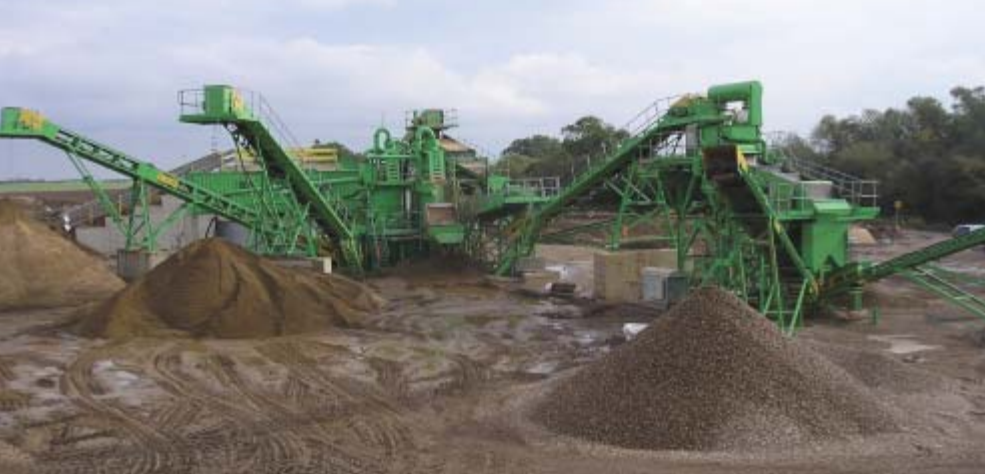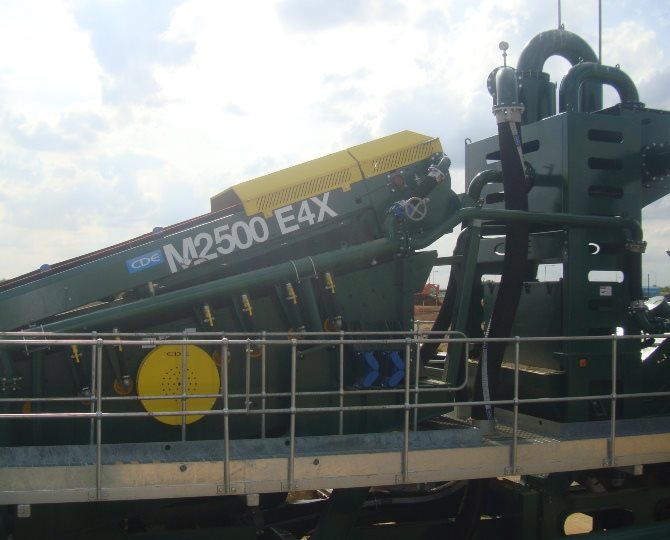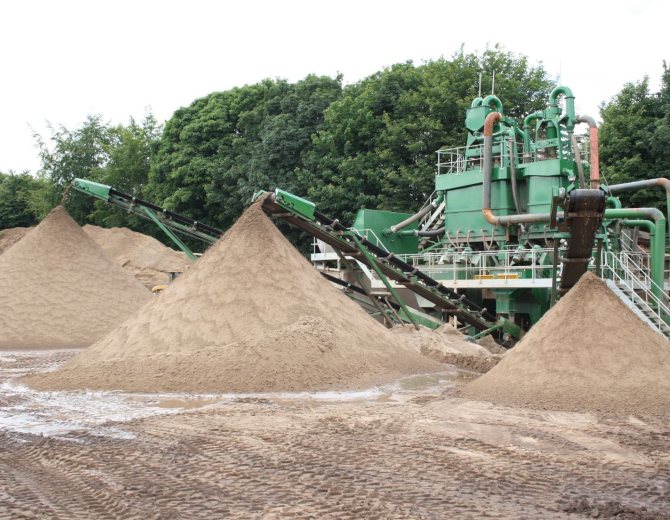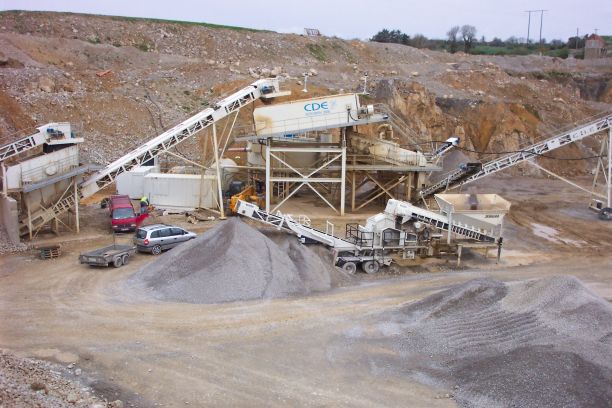Tonnage
170tph
Material
Lignite Removal, Sand & Gravel
Output
6mm sand | 10mm & 20mm aggregate
THE CHALLENGE
Concrete producers tend to shun sand with visible lignite as it rises to the surface of concrete mixes — a particular problem for flooring applications. This has had a major impact on the market value of lignite-affected sand in regions where lignite is common.
The largest lignite seam in western Europe extends under Lough Neagh (itself the largest body of fresh water in the British Isles), close to CDE’s head office in Co. Tyrone. The lough is dredged for sand by a number of companies and lignite is a constant problem. CDE have addressed this with research and prototype development projects for local customers, giving the company a unique insight into lignite-removal systems.
The north-east of England is another region commonly affected by lignite problems, and early boreholes for F.D. Birds’ new sand and gravel project at Catwick Quarry in Beverley, near Hull, showed that lignite would be present in all extracted sand and gravel. Managing director John Bird entered discussions early with CDE to achieve a complete lignite-removal solution, ultimately resulting in the company’s 170 tonnes/h installation.
THE SOLUTION
The dumptruck feed hopper (40-tonne capacity) is fed via an access ramp. Its heavy-duty design and 6in tipping grid accepts ‘as-dug’ material while removing excess oversize. Feed is then conveyed to a twin-deck R2M108 (20ft x 6ft) rinsing screen. This separates oversize, intermediate aggregate and sand.
The oversize is stockpiled while the –5mm slurry passes to a CDE MultiSands plant. The Multi-Sands plant comprises two CDE counter-flow classification units (CFCUs) fitted with sieve bends, and three hydrocyclones. The CFCUs separate sand at 250 microns, overflowing fine particles and lignite from the main sand fraction. PLC-controlled pneumatic pinch valves control the flow of sand from these units to two integrated C-Series quick-dry, high-frequency dewatering screens.
The complete classification plant is controlled by a PLC program that the operator can easily manipulate to achieve the precise grade required for the two sand outputs at any time, usually concrete and building sands. The lignite-free sand is offered at a typical 12% moisture content.
Slurries containing lignite and fine sand particles are passed through sieve bends to remove larger lignite particles; the underflow from these is then passed back to the Multi-Sands plant while the dewatered lignite is stockpiled in a bay.
Wash water from the sand-classification process passes to an adjacent T-08 high-rate thickener. This efficient unit recycles as much of the wash water as possible, with minimal use of polyelectrolyte, and reduces waste volume from 400m3/h of dirty water to approximately 25m3/h of sludge at around 600g/litre solids concentration. The need for large settling lagoons is negated and the problems associated with such ponds — water loss through evaporation and run-off, risk of contaminating local waterways, health and safety, back excavation etc — are significantly reduced.
As noted, the primary rinsing screen carries forward the +5mm material. This carries a large amount of lignite and clays which need to be removed. CDE installed a Rotomax log-washer at this point to offer the highest level of attrition at feed rates of up to 80 tonnes/h. This breaks down any clay-bound material and scrubs the agglomerated gravel. Liberated fine material and water from the Rotomax is passed to a ground sump fitted with a vertical Warman pump. The sump also collects groundwater and wash-down water, facilitating site housekeeping and maintenance. This slurry is recycled to the primary rinsing screen, improving fluidization and reducing fresh-water requirements.
Cleaned aggregates from the Rotomax are conveyed to an air-pulsed ‘allmineral’ jig. This jigging unit removes lignite and any other light contaminants, achieving 0.01% lignite by weight in the final product. The principle of the jig is that particles stratify in pulsating water; the upward and downward currents fluidize and compact the grains into homogenous layers. Low-density particles rise to the surface while denser particles settle to a lower level. The jig is controlled by a separate PLC and can be easily adjusted and optimized according to the feed characteristics. Lignite removed by the jig is dewatered on a static screen.
THE RESULTS
Clean and lignite-free aggregates are conveyed to a CDE twin-deck D2M60 (13ft x 5ft) screen for final classification to 6mm, 10mm, and 20mm. The 6mm is passed to a final C-Series quick-dry dewatering screen to retain as much water as possible within the system. Each of the aggregate products is then stockpiled by 15m long mobile conveyors.
Finer cutpoints are achieved with the cyclones; these are specified according to the flow volumes at different stages in the system and have effective silt separation points from 75 mircons to 40 microns.
Given the very high level of lignite removal offered by this system, operators can now consider processing a wider variety of raw materials while achieving consistent and commercially attractive outputs.




